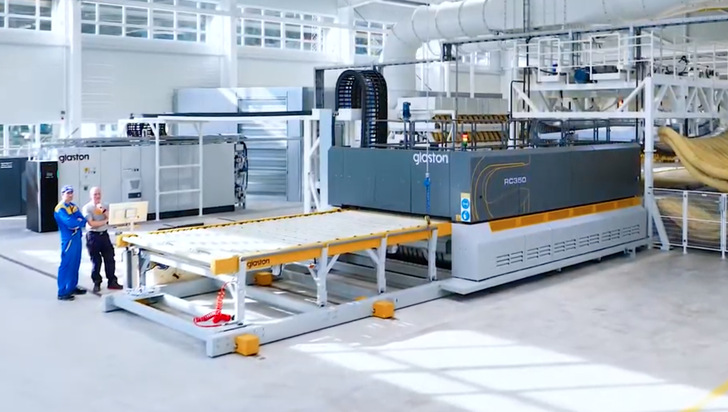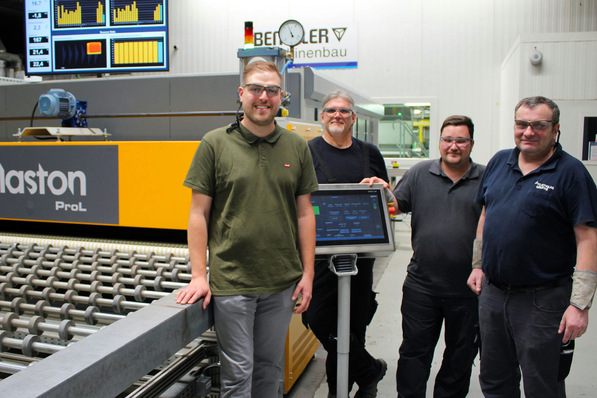Automation does make things a bit easier. And let us tell you, the latest kitchen ovens do have some nifty features. To be honest, this is exactly what Glaston are trying to do with their tempering furnaces – to automate some of the processes in order to guarantee more consistent quality. Nowadays, tempering furnaces come equipped with more sensors, allowing the operator to pull more data and measurements. They also include more automation, which in turn minimises operational mistakes.
In the long run, automation will make operating a furnace a bit easier. But still glass processors need to do many things correctly to reach high-quality tempered glass. Here we have collected a list of common mistakes that happen in the glass tempering process:
But before you get started: Here are 6 answers on digitalisation
1. Not learning the process basics
When a person starts a new project, he/she has to learn something new. Let us tell you, we have seen processors who have skipped the basics and ended up with quality problems before they even started to get the proper results. Not an ideal scenario, to be sure. The tempering line is not a magical black box. To be honest, the behaviour of glass is relatively simple to understand. If you do not heat or cool the glass uniformly, it will bend. If you heat it too much, it will have waves.
These are the basics that should be clear to anyone operating a processing machine. Manufacturers often offer their clients the basic documentation and training packages that also clearly state the fundamental facts. But make sure you select a partner who can also train and instruct you beyond the basic documentation. Take time to learn the process basics! This might take a while, but you’ll benefit from it in the long run. For example, when you introduce new coatings, it is easy to look into the heating section and see how the glass behaves in the process. If you know the basics of heat transfer, you’ll find it easier to adjust the process yourself.
2. Neglecting the quality of pre-processing
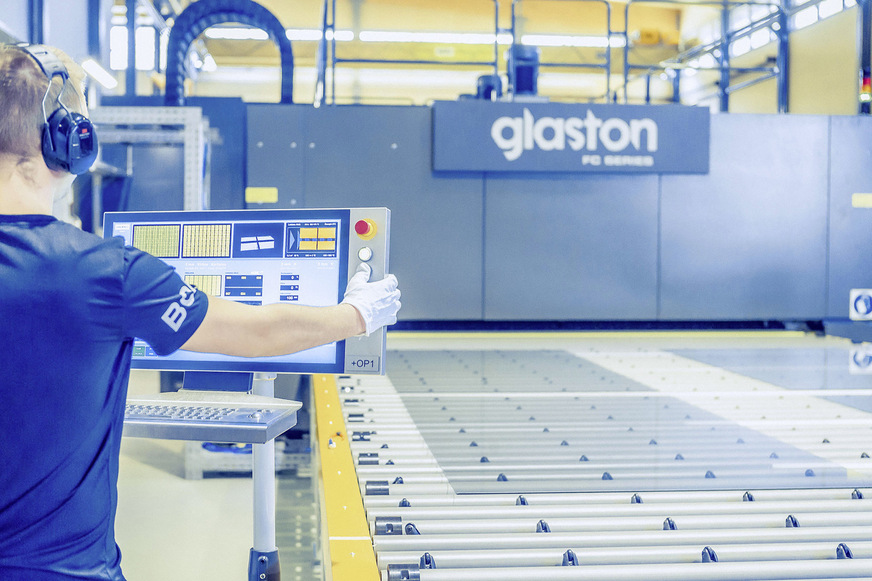
Glaston
The tempering line is usually among the largest investments in the glass processing factory. This means that the primary attention is directed largely towards the tempering line. However, if we look at the end product’s quality, as well as the production yield, we can conclude that the pre-processing – including the cutting, grinding, washing and more – is just as important as the tempering of glass. The pre-processing quality has a direct connection to the tempering line’s yield when it comes to breakage and production quality. Sometimes, we see processing plants that have upgraded to a state-of-the-art tempering line but have left the pre-processing systems unchanged and out of date.
See also this article: Study sheds light on role of spacer bars on thermal comfort
Poor cutting or edge work results in more breakage in the tempering line. Conversely, if the edge work is good, the glass can run at a lower temperature in the heating section, which leads to better optical quality and less breakage. For example, diamond-polished thick glass can be processed with about 20 degrees lower temperature than normal seamed glass. This already has a major impact on quality and, of course, glass breakage.
3. Maximizing loading efficiency
When a company invests in a new tempering line, it is very rare for it to become the bottleneck of the factory. Still, many obsess over the highest possible loading efficiency by putting both small and large glass sheets into the same load – long side leading and short side leading in the same pattern but with a different orientation.
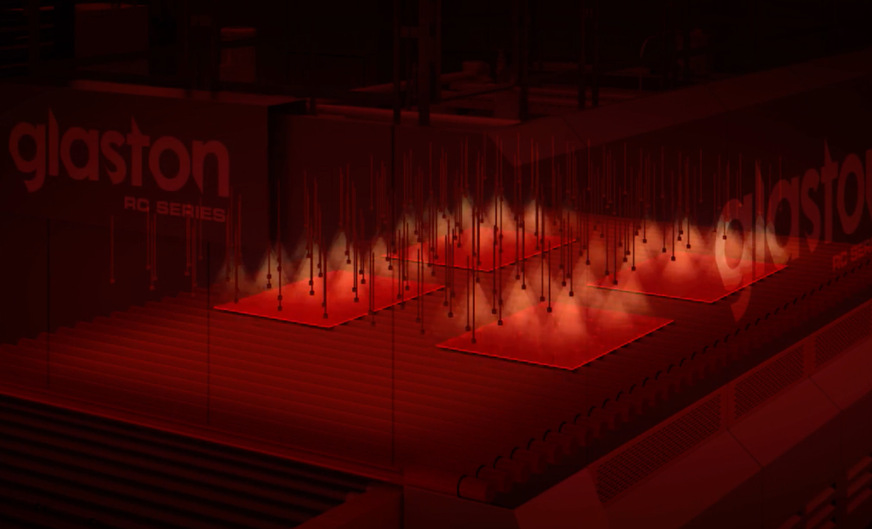
Glaston
Mixing up the loading patterns with different glass orientation – short versus long edge leading – will result in different optical quality. If these glasses are installed as part of the same facade, you’ll see a different optical reflection and, most likely as a result, end up with a reclamation. This is a common rookie mistake. So, make sure to avoid it.
Do not misunderstand: Maximising loading efficiency is a good thing, and it will increase your energy efficiency as well. The point is not to compromise on quality.
4. Having a heating time that is too long
Note that quite often operators think that poor cutting or grinding quality comes from having a temperature that is too low in the process of tempering of glass. In this case, the operator is correcting the wrong problem and, as a result, has poor quality glass with poor edge work.
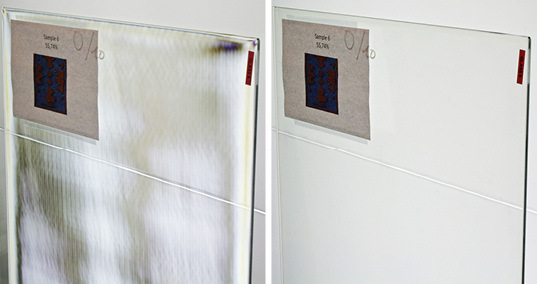
Matthias Rehberger / GLASWELT
5. Running thick and thin glass in a similar way
Avoid putting a thick piece of glass into a very hot furnace. Trust us, you do not want to hear the “Boom!” that is the noise of thick glass breaking in the tempering furnace. In this case, the breakage is caused by heat shock. As a result, the furnace needs to be cooled, and the broken glass removed. As a kind reminder, this process takes about two shifts to complete.
Also, when running a thicker glass of around 10–19 mm, the quenching pressure the operators are applying is often too low. A common rule is that low pressure prevents the glass from breaking in the chiller. Most often, the case is almost the opposite. So do not use pressure that is too low when producing of thick glass.
6. Removing the ghost the wrong way
Many operators try to fix the white haze issue by operating the line to run the glass “sad” in the furnace. In other words, the corners of the glass touch the rollers but the centre does not. Yes, this does eliminate the white haze, also known as “ghosting.” But running thick glass “sad” will harm the rollers. The ghosting can chip off some glass from the sides or cause markings to the rollers. As a result, the following loads will have problems and the thin glass panes will not stay stable. As a rule of thumb: Do not exaggerate the sadness of the glass.
Conclusion
It is well-known that as our work becomes more routine, the more mistakes we make. And the more you think you know something, the more likely it is that your choices lead you down the wrong path. That’s why even the greatest experts should always keep the basics in mind. If you have any unanswered questions about the tempering of glass, we recommend downloading Glaston’s free eBook. It will give you the basics – and much more beyond.
This article was published in cooperation of Glaston.
Authors: Sami Kelin of Glaston, Matthias Rehberger of Glaswelt and Malte Forstat of GW-News.







